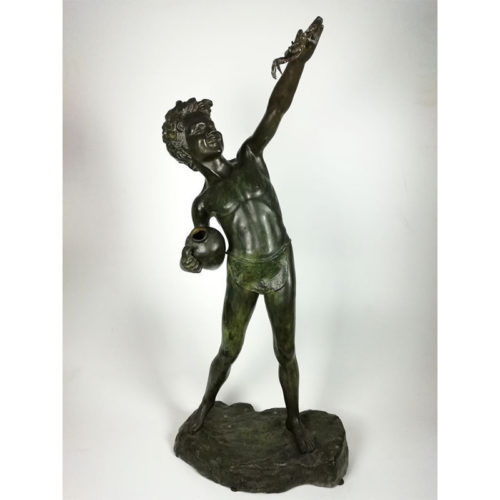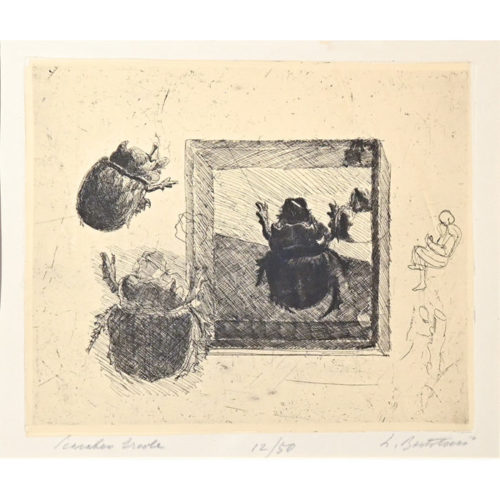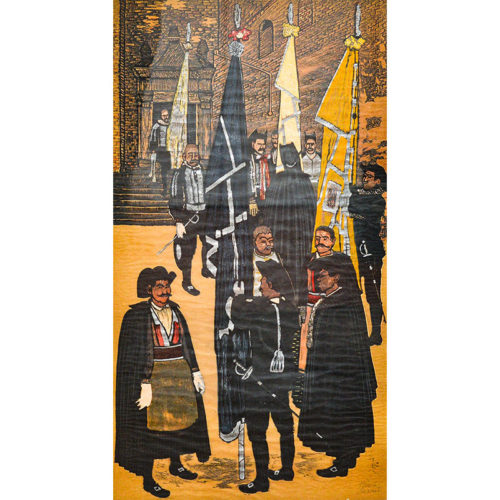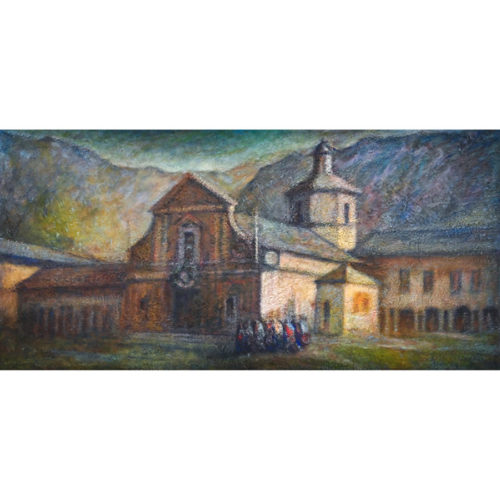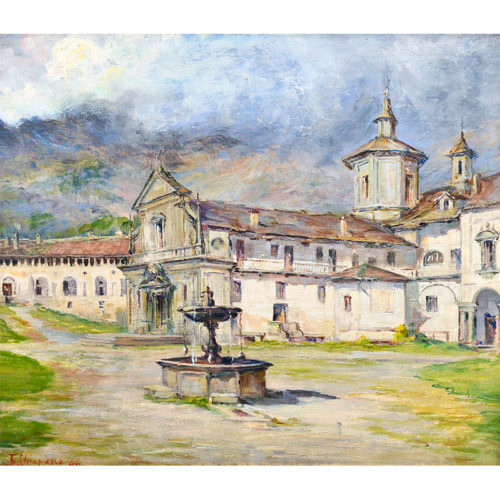Bronze sculpture by Giovanni De Martino (Naples 1870-1935), was an Italian sculptor, active in Paris. Known for the production of sculptures, small bronze busts, in particular Popolane, street urchins and fishermen with realistic features. This work "Guy with crab" is in excellent condition. Signed by the author on the amphora.
Period: Early 1900s
Measurements: H 123 x L 56 cm
